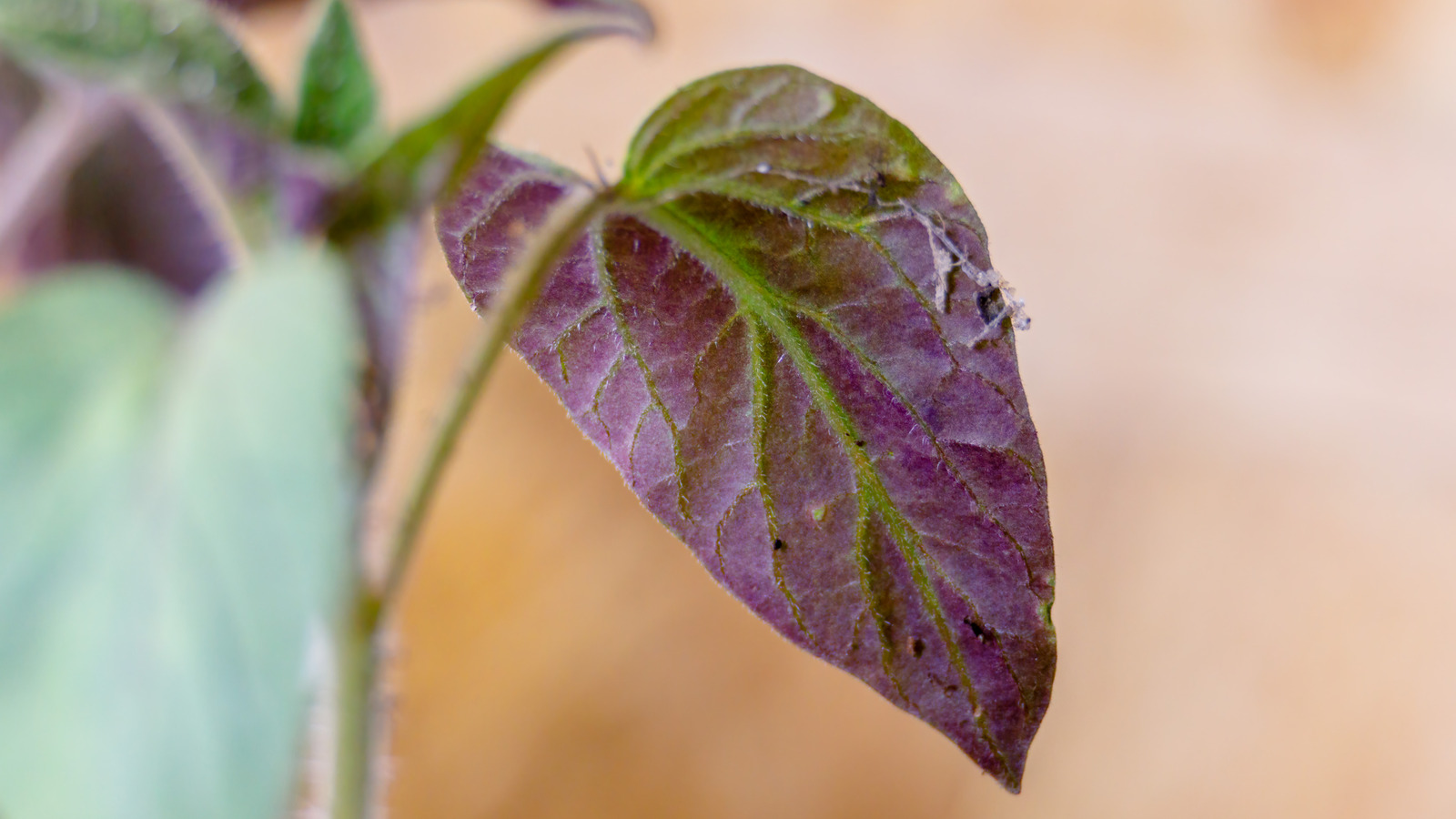
Tomatoes are a popular choice for home gardens due to their versatility in cooking and the wide variety of available types. While some tomato plants naturally have purple fruit and leaves, it is not common for tomatoes to have purple foliage unless they are specific varieties like ‘Indigo Cherry Drops’ or ‘Indigo Rose’. Purple leaves on tomato plants can be a sign of concern, indicating either a phosphorus deficiency or a viral infection.
If the undersides of tomato plant leaves appear purple, it may be due to a phosphorus deficiency, which can also cause the plant stems to turn purple. Young or recently transplanted tomatoes are more susceptible to this issue as their roots may not be absorbing enough phosphorus. Older plants may show reddish-purple coloring on the undersides of leaves. To prevent phosphorus deficiency, avoid transplanting tomatoes too early in the season when the soil is still cold. Adding fertilizer to the soil can also help correct the issue.
Curly top virus is another potential cause of purple leaves on tomato plants. This viral infection is spread by beet leafhoppers and can cause curling of upper leaflets and purplish coloring along the veins of the foliage. Stunted growth and yellowing of the plant may also occur. Preventing curly top virus can be challenging, but using row covers to protect plants from beet leafhoppers and planting tomatoes closer together can help reduce the risk. It’s important to be aware of common pests that affect tomatoes in the garden to quickly address any issues that arise.






